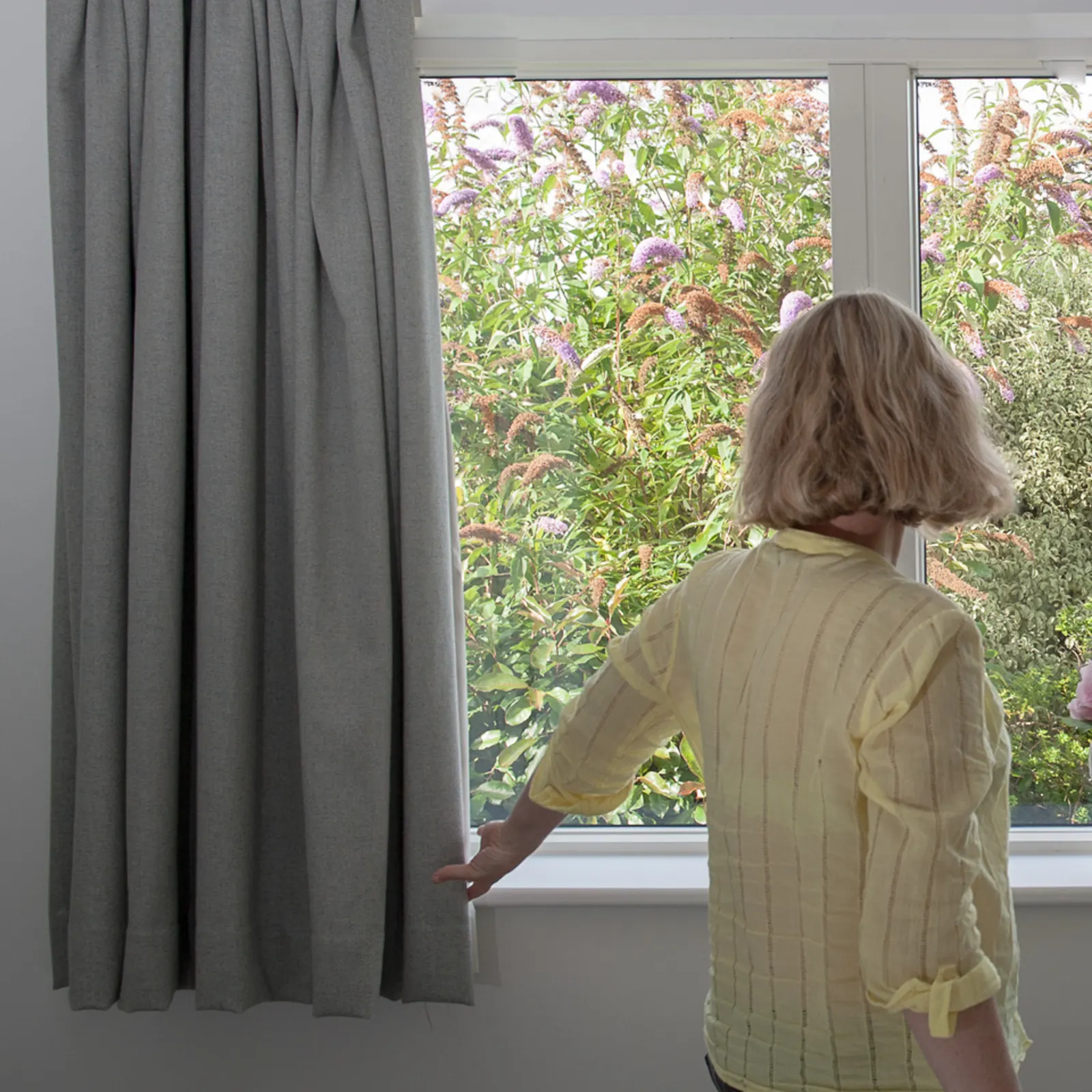Book our home measuring service in London

Cosy up your home
There’s a chill in the air, the leaves are turning and our Indian summer has passed. It’s time to make our homes as cosy as possible.
Adding thermal lined curtains and blinds to your windows is a super-quick fix to reducing your heating bills and keeping your home cosy. Read on for our top tips on keeping your home warm (and stylish!) this autumn and winter.
What many people don’t realise is that rain and wind contribute to heat loss from a house just as much as a drop in outside air temperature. Recent research carried out by the University of Salford’s School of the Built Environment found that heat loss will increase by 5-8 per cent if it’s windy outside and 20 percent if it’s raining. And if it’s both windy and rainy, the figure can rise to 30 per cent.
A first step to combating heat loss is to make sure your windows and doors are in good repair. Remove and replace old caulking and install draft excluders to ensure an effective seal. Self-adhesive foam strips can help fill gaps in the edges of windows but metal strips with brushes attached are more effective. They cost a little more but the results last much longer and they can also be used around the hinges and frames of doors. Whatever solution you opt for, creating an effective seal will prevent hot and cold air from entering or leaving a room as well as eliminate drafts that can give thermostats a false reading.
But what else can you do to improve energy efficiency in your home without going to the expense of double or secondary glazing? The answer (of course!) is to invest in some good quality thermal curtains or blinds. We’ve said before that they do so much more than dress a window and ‘finish’ a room; choosing the right type of thermal made to measure curtains or thermal made to measure blinds is one of the best ways to protect your home from heat loss and save you money during the winter months.
So what sort of made to measure curtains should you opt for? Here are a few tips:

01. Choose effective insulators
Choose naturally thermal, thicker fabrics such as wool curtains or flax curtains as these are particularly effective insulators. Wool fibres are crimped which means that when woven together, tiny air pockets are formed that trap air to create a thermal barrier. And wool’s ability to insulate is even preserved when damp, making it a great option for curtains or blinds in bathrooms and kitchens.

02. Choose Interlining
Ensure curtains are interlined. This is where a thick, soft, blanket-like fabric is sandwiched between the front (or ‘face’) fabric of the curtain and the lining. Not only does this create a more sumptuous look but air is trapped between the layers, improving a curtain’s ability to insulate. Interlined curtains also absorb more sound so an effective choice if you live on a busy road or somewhere else with a lot of external noise.

03. Hang curtains close to the ceiling
Hang your thermal curtains as close to the ceiling as possible and make them wider than the window frame to prevent heat loss. You might even consider using magnetic tape along the edges of the curtain to seal it against the wall. Add another strip to the wall and press curtains to the wall to form an airtight seal.

04. Go for pooling
Make your curtains long and have them resting or ‘pooling’ on the floor to slow the flow of hot air leaving the room and cold air entering it. This creates a thermal seal and blocks any drafts around skirting boards.

05. Roman blinds above radiators
Consider a Made to Measure Roman Blindwhere you have a radiator below the window as it will not block heat coming into the room. Team with a pair of full length ‘dress’ curtains that don’t pull across. The result will not only look elegant but avoid the cardinal sin of losing heat from a radiator positioned behind a pair of full length curtains.

06. Keep your curtains open in the day
For optimum energy efficiency, keep curtains open during the day when a room is receiving sunlight to maximise the natural - and free - heat generated. Close the curtains as soon as the sun sets to keep all the heat from escaping through the window. It’s estimated that this can reduce heat loss by up to 10 per cent.

07. Curtains are not just for windows
And don’t forget that curtains aren’t just for windows. Placing a curtain in front of doors that lead outside works a treat when it comes to reducing drafts and lowering heating bills. Air coming through fittings or letterboxes are blocked off by your thermal curtains. This look works particularly well in homes with a cottage-style interior.
Finally, energy efficient curtains serve an invaluable function in warmer weather too. During the summer heat, they can be closed during the day, before the sun shines directly onto the windows to block heat from entering our homes. This keeps the air inside at a comfortable temperature and significantly reduces the expense of cooling a room. So, there’ll be no need to take down your beautiful wool curtains or flax curtains when Spring comes around again.
Start designing some thermal, energy-saving curtains today…